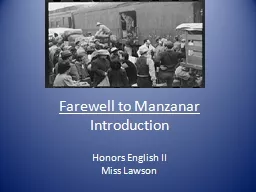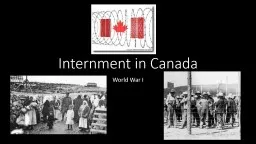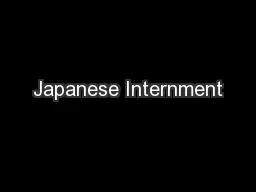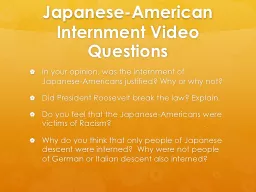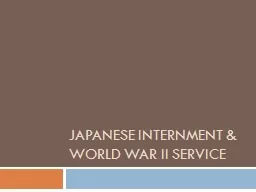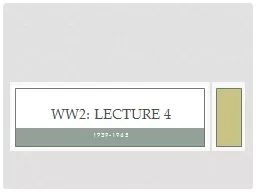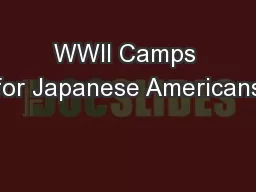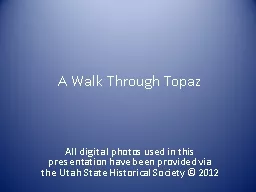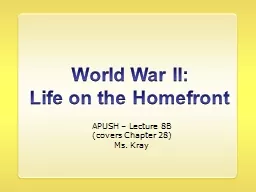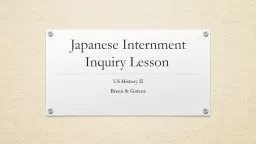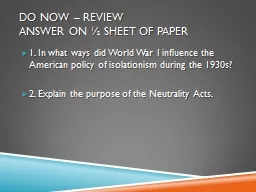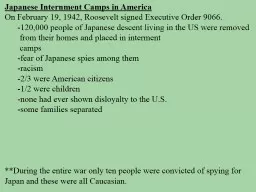PPT-Japanese Internment
Author : debby-jeon | Published Date : 2015-11-01
1 Just 10 weeks after the attack on Pearl Harbor President Roosevelt signed Executive Order 9066 authorizing the War Department to designate military areas as
Presentation Embed Code
Download Presentation
Download Presentation The PPT/PDF document "Japanese Internment" is the property of its rightful owner. Permission is granted to download and print the materials on this website for personal, non-commercial use only, and to display it on your personal computer provided you do not modify the materials and that you retain all copyright notices contained in the materials. By downloading content from our website, you accept the terms of this agreement.
Japanese Internment: Transcript
Download Rules Of Document
"Japanese Internment"The content belongs to its owner. You may download and print it for personal use, without modification, and keep all copyright notices. By downloading, you agree to these terms.
Related Documents


